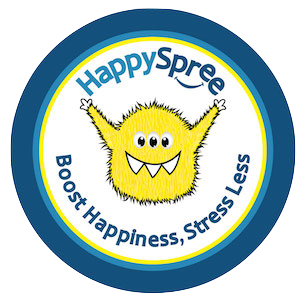Margarita Tarragona – photo credit University of Pennsylvania
We are the stars of our lives with action always happening around us. With so many stories to choose from, selecting what to tell ourselves and others can seem difficult, but the stories we tell have a profound effect on our lives. So how can we create our best narratives?
Maragarita Terragona, PhD; positive psychology expert, helps us mine the gold in our lives. Her book Positive Identities: Narrative Practices and Positive Psychology includes six-weeks of thoughtful exercises to help us create engaging, positive stories. Terragona said, “The way we story our experiences can limit our options or expand our possibilities. As a therapist, I love to see positive stories working and how changing our stories is so powerful.”
Tarragona teaches us to live our “preferred identity” (living according to what we believe and value) to create a “dominant story” and this shapes our identity. For instance, if your dominant story is “outgoing adventurer” you might choose an airline job to create adventurous stories to tell.
Mining the Positives
Wondering how to create the identity you prefer? One gem Tarragona recommends is to think of 2-3 people you admire and then list positive qualities of that person. For instance, Mother Teresa is kind, loving and patient. Circle the qualities you feel are most important, and write them as if they are yours. Tarragona said, “Notice and appreciate qualities in other people and then see if these qualities fit with the way you see yourself.”
She also recommends using the “Best Possible Future Self” exercise, created by Professor Laura King from the University of Missori-Columbia. For this exercise imagine everything in your life is going as well as it possibly could and write about this for twenty minutes a day. Do this for three days in a row. Research has proven that writing about goals helps us achieve them and increases subjective well-being.
But what if you discover that your dominant story produces an effect you don’t like? For instance, if your dominant story is “shy”, and you want to change this; look for evidence of times you aren’t shy to create an “alternative story”. You can then focus on past and future outgoing behavior to create a new dominant story. “Ultimately we want to choose a story congruent with who we want to be,” said Tarragona. Our preferred self is fluid and can change over time, like choosing to exchange “shy” behavior for “outgoing.”
Tarragona added, “Our stories are very important to how we think and feel. When objective things happen in our lives there are a range of possibilities depending on how we interpret them.” One example is when we wave at a friend and she doesn’t wave back. We could think: “she doesn’t like me” or “maybe she was distracted and didn’t see me wave.” Think about the different feelings these stories might produce. Our thoughts affect our feelings, so choose your thoughts wisely.
In addition to using stories to create our positive identity, Tarragona recommends harnessing stories to help problem-solve. She says, “Your problems are not your identity. Think of problems as adjectives instead of nouns.” For instance, instead of telling yourself: “I am disorganized” think “my house is disorganized.” She adds, “The first sounds like part of who you are and there’s not much you can do about it, but the second gives you the chance to tackle disorganization and embrace the good feelings organization gives.” You might then choose to tell a funny story of how you cleaned up your messy behavior.
Using Stories to Connect
Tarragona helps us learn to cultivate and reflect on positive emotions, such as gratitude, hope and love; to create positive stories and increase our well-being. Tarragona’s book provides several exercises to help readers increase positivity. One of these helps us track our positivity ratio, (researchers have found that people that flourish report three positive emotions for every negative).
Another way to strengthen our stories is to focus on engagement in life or “flow experiences”. Dr. Martin Csikszentmihalyi, at Claremont University discovered that these experiences involve total concentration, challenge and use and development of skills. Tarragona recommends thinking of an activity so absorbing that you lose track of time. This is a flow experience. Her workbook’s exercises help us discover and maximize flow experiences, which we can later story,
Tarragona also recommends using character strengths to create good relationships and then utilize stories to enrich the way we connect. (To discover your character strengths take the free VIA Character Strengths Survey.) For instance, we could use the character strength of “bravery” to reach out to new friends in a hiking group and later tell the story of how we met our best friend. “Using character strengths to tell stories allows our relationships to become stronger and helps us be more present in life,” says Tarragona. She hopes readers of Positive Identities will explore the emotion of our best self and have fun identifying and strengthening our stories. “Have an inventory of joyful fulfilling stories and use them to get through the difficult parts of life and create your best possible future,” she says.
I found the ideas and exercises in Positive Identities a treasure trove, and learning about the positivity ratio changed my life for the better. I use this ratio and my character strengths every day to create positive stories. I give the book 5-stars.
I’m excited to continue trying these ideas.



